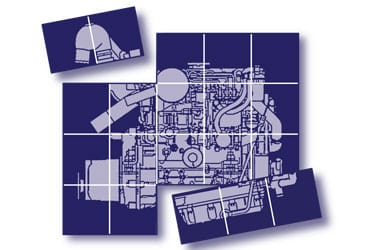
repower
Many sailboats built two decades ago or earlier still have plenty of life left in them. But their engines may not. Grey Marine, Palmer, Perkins, Buhk, Universal, Pathfinder, Faryman—these once-common names in marine propulsion are all but gone from newer boats. Many of these engines were designed as truck or tractor motors, then retrofitted for marine use. The question facing you now is: Should you rebuild the existing engine? Or repower with a brand-new engine?
Let’s start with the cost of repowering. “You’re talking probably between $12K and $16K for a 30-footer, and $18K to $22K for a 40- to 45-footer,” says Mike Muessel of Oldport Marine, in Newport, Rhode Island, who’s repowered dozens of boats.
Expensive? Yes. But before you dismiss that option, first account for the real costs of a rebuild. “When people talk about rebuilding an engine, they usually mean rebuilding the internals—new pistons and rings and so forth,” says Muessel. Too often, he says, they forget to tally the cost of all the auxiliary parts: the starter ($400 to $800), alternator ($400 to $800), heat exchanger ($1,200), and saltwater pump ($500). Add a wiring harness, engine gauges, switch panel, transmission, and injection pump, plus labor, and the costs of a rebuild start to compete. It’s not uncommon, Muessel says, to spend 60 percent of the cost of repowering on a rebuild. And you’re still left with an older engine that’s long out of warranty.
If you’re shopping for an older boat, take a good mechanic with you on the sea trial and get a thorough assessment of the engine’s condition. With that firsthand information, factor the real costs of a dependable power plant into your final negotiations for the boat.








